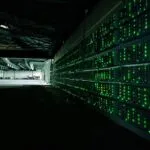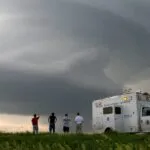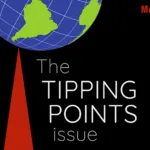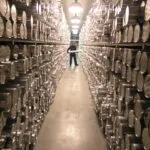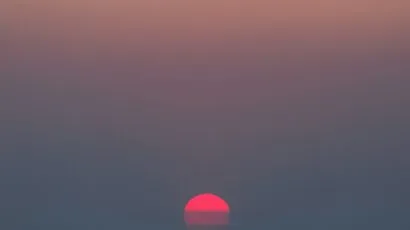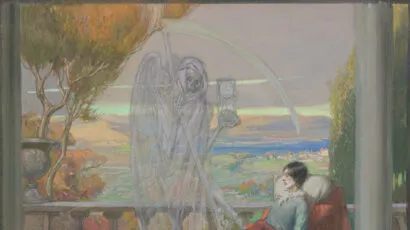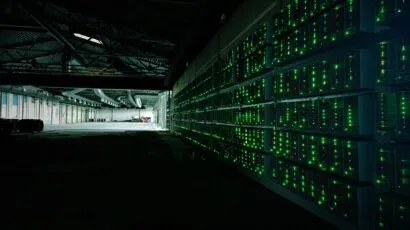Latest buzz: rare bees essential part of diverse, resilient ecosystems
By Jessica McKenzie | April 21, 2022
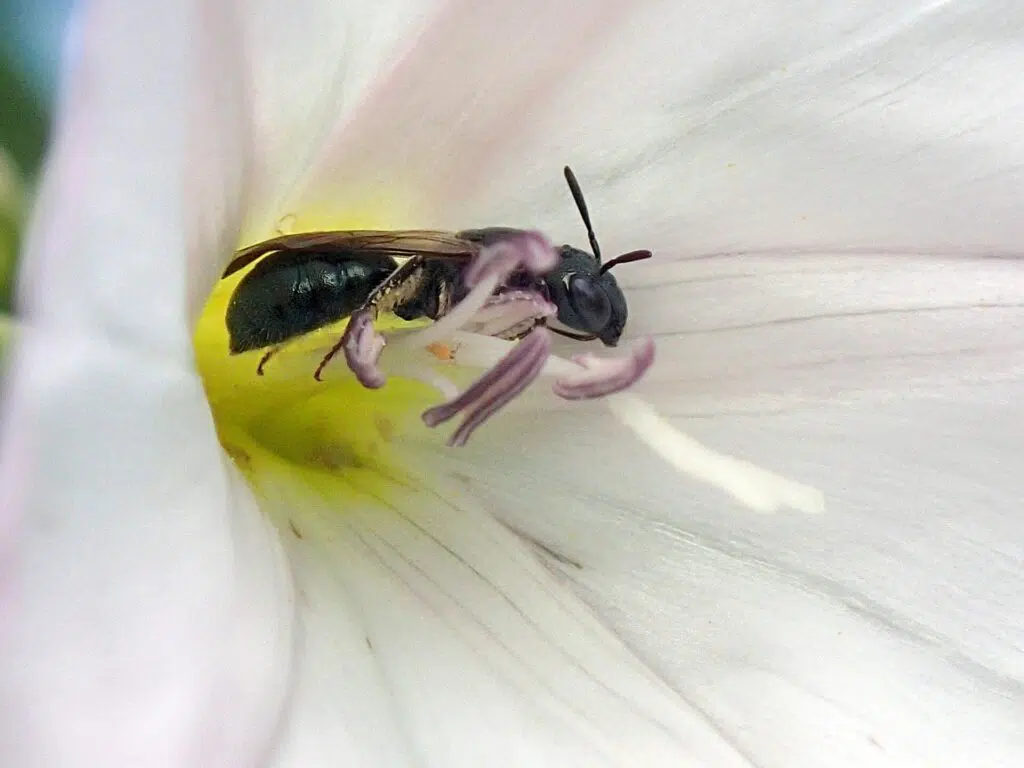 A bee of the genus Ceratina on a morning glory flower, genus Ipomoea. (Photo by Joe Zientek)
A bee of the genus Ceratina on a morning glory flower, genus Ipomoea. (Photo by Joe Zientek)
Honey bees are big business. As the primary pollinators for roughly a third of all US crop production, they are worth at least $15 billion a year to the US economy. Wild bees contribute to US agricultural yields as well, boosting the value of just seven major crops by $1.5 billion a year.
But while there are a whopping 20,000 or so bee species in the world—some 4,000 of which call the United States home—the bulk of crop pollination is shouldered by just a tiny fraction. One study found that a mere 2 percent of bee species are responsible for a whopping 80 percent of crop pollination. When it comes to crop pollinators, quantity appears to be more important than variety. Fewer pollinators beget lower yields of popular foods like apples, blueberries, cherries, almonds, and watermelons.
What about the other 98 percent of bee species—do they not have any value?
A new study published in the Royal Society’s journal for biological sciences analyzed over 20,000 bee-flower interactions in New Jersey to assess the value of bee diversity in wild plant communities. The researchers found that the number of functionally important bee species increased with the number of plant species in a community. Put more plainly, diverse ecosystems require greater bee diversity.
It’s not certain what would happen if bee diversity in any one region collapsed, but a dramatic decrease in the number and variety of pollinators could reduce plant pollination and, in concert with climate change, destabilize entire ecosystems on which plants and animals—including of course humans—rely.
“Until we did this paper, there had been very little work done on the role of pollinator diversity in natural systems or in diverse plant communities,” Dylan Simpson, the lead author of the paper, said.
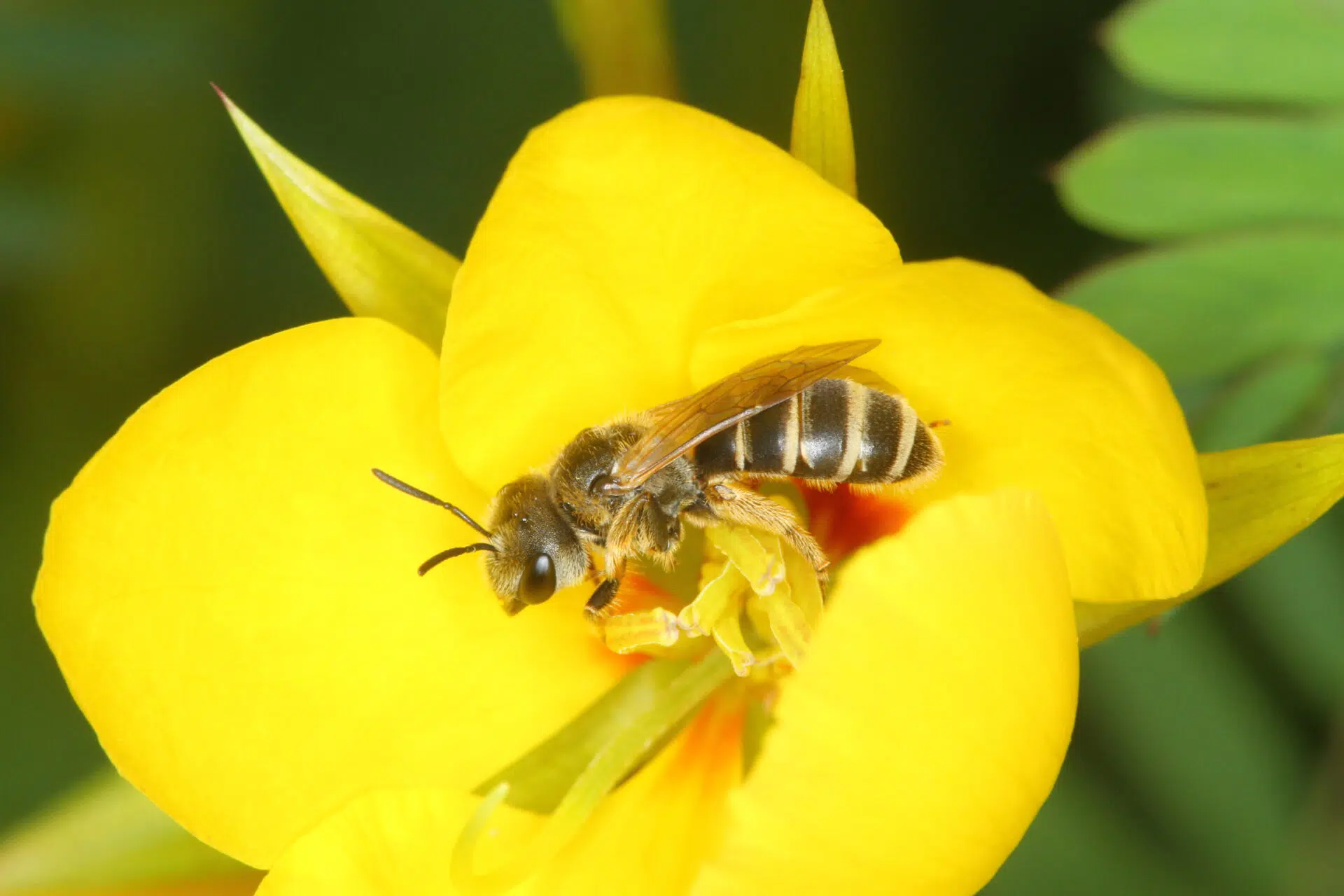
Most studies of pollinator diversity to date have focused on crop pollination. “In that context,” Simpson said, “there’s definitely some evidence that pollinator diversity matters, but there’s also a fair amount of evidence that abundance is really what matters more.”
That conclusion reflects normal species distribution. “In general, in the wild, there are a few really abundant species, and most species are actually relatively rare,” Simpson said. So, if you have two fields, and one field is less pollinated than another, there’s probably just fewer numbers of these very common bees.
“That can sort of lead to this idea that relatively few species are really doing all the work,” Simpson said. “And we need to focus on making sure we maintain abundance of these common species.” It can also lead researchers to conclude that species diversity doesn’t have any value beyond biodiversity for the sake of biodiversity.
But food crops are only a small fraction of the plants that rely on animals like bees for pollination. Nearly 90 percent of flowering plants are animal-pollinated.
“At one farm, you’re really just looking at one plant species, whereas in the wild plant community adjacent to the farm, there’s lots of different plant species.” Simpson said. “Different bee species are going to be visiting different plant species, or different plant species are going to be depending on different bee species. And that would suggest that bee diversity is going to be a lot more important if you have many plant species that need to be pollinated. And that felt like a very simple idea that can’t be shown, if you’re just looking at crops. It’s just sort of invisible.”
Simpson’s dataset was gleaned from 11 sites in New Jersey, which researchers visited multiple times over a year. On each visit, the researchers—equipped with note-taking materials and a net—systematically surveyed the site, looking for bees that landed on the reproductive parts of a flower, caught in the act of pollination, perhaps. They would then collect the bees, note which plant they had last visited, and then take them back to the lab for identification. Researchers collected well over 20,000 bees, and the final dataset Simpson analyzed (once a few plants with too-little bee data had been excluded) was made up of 20,942 plant-bee interactions, representing 70 plant species and 173 bee species. (There are some 400 bee species native to New Jersey.)
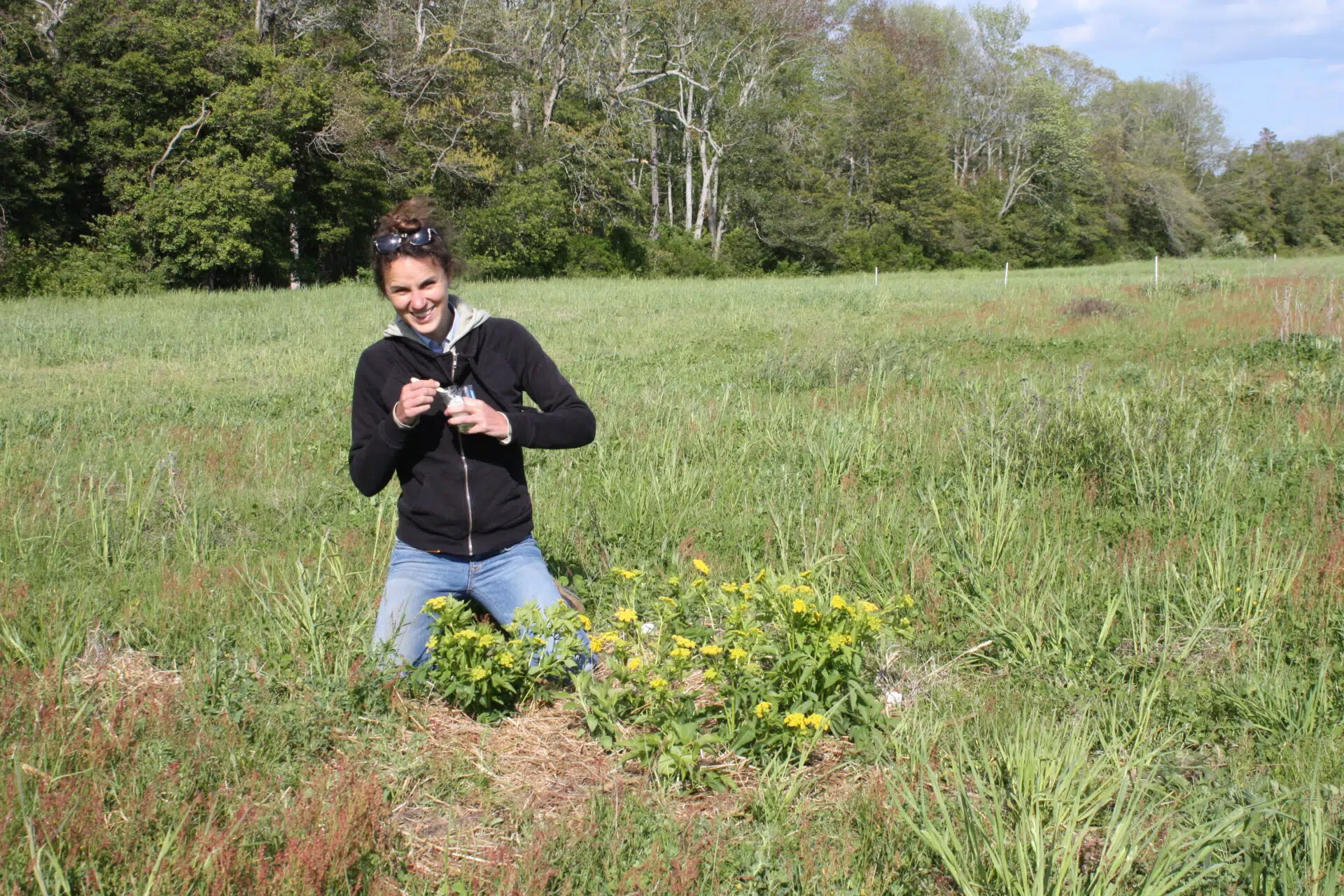
Simpson’s first question was about the importance of bee diversity; the second was the importance of rare bee species. “When we’re thinking about biodiversity loss, and we’re concerned about losing species, it’s typically the rare species that we’re concerned about losing,” Simpson said. “If we’re thinking about what the consequences of biodiversity loss are going to be, we should really be thinking about what the functional consequences of losing those rare bee species are. And because of the way we’ve asked this question primarily for crops, it has generally seemed as though rare bee species aren’t really doing much for pollination.”
Simpson’s analysis found that a quarter of bee species important at the community-level were rare species. To clarify, these were rare species among the sample he analyzed, so rare in this case does not necessarily mean endangered, or even rare across the United States—merely numerically rare at these 11 New Jersey sites.
“Usually endangered things are rare, but not all rare things are endangered,” Simpson explained. “In the context of academic literature, there’s a lot of reasons to think, particularly in the way that that pollination has been studied, that rare species weren’t really contributing. So whether or not they were endangered, I think this is a good demonstration that that things don’t have to be super abundant to be having some important effects.”
Simpson’s study goes a long way to establishing the value of bee diversity for the role it plays in the broader ecosystem. People don’t necessarily want to save bees for the sake of saving bees—they need research like this to point to and say, rare bees are important. Simpson’s study may not put a dollar figure on that value, but it still demonstrates that bee diversity has a function.
Of course, Simpson can’t say definitively what would happen if bee diversity in New Jersey or elsewhere were to collapse, because plant-pollinator communities are complex and dynamic. But, a dramatic decrease in the number and variety of pollinators could reduce plant pollination and destabilize ecosystems. “As species are lost, there are fewer interactions, and generally the systems are going to become simpler, and then they’re kind of more rigid, there’s less backup,” Simpson said. “They become less resilient to change, less resilient to disturbance, and more prone to collapsing.”
For example, a big concern with climate change is phenological mismatch. “This is the idea that flowers and the bees that pollinate them might not emerge at the same time, and then the plants will stop getting pollinated and the bees will stop getting food,” Simpson said. Diversity loss will make both bee and plant communities more vulnerable to this risk. In a healthy, diverse ecosystem, there is more likely to be some redundancy, meaning that more than one bee species can pollinate more than one plant species, and more than one plant species can feed more than one bee species. But if that system becomes simplified, and one type of plant is relying on one type of bee, or vice versa, both of those species are going to be more vulnerable to climate shifts that put them out of sync.
That’s precisely what Simpson would like to see studied in the future. “We documented what bees were pollinating what plants when we observed; we didn’t actually collect any data that would tell us what would happen if those species were lost,” Simpson said. “If a particular bee species is lost from an area, what happens to the community? …[And] what’s the actual fitness cost to plants?”
Wild bees face all kinds of threats, not only from climate change, but from habitat loss, pesticides, and viral and fungal pathogens. And that threatens all bees, not just the rare ones.
“Realistically, you wouldn’t expect the bee community to stay the same except minus one species,” Simpson said. “Usually, if you’re losing species, it’s because you’re losing individuals overall. And as you lose individuals overall, some populations become too small to maintain, and then you start to species start to drop out.”
That suggests any steps taken to maintain bee abundance—from saving habitat to reducing pesticide use to diversifying crop systems—will likely save bee diversity as well. That will benefit wild plants and crops—and the people and animals depending on them—alike.
Together, we make the world safer.
The Bulletin elevates expert voices above the noise. But as an independent nonprofit organization, our operations depend on the support of readers like you. Help us continue to deliver quality journalism that holds leaders accountable. Your support of our work at any level is important. In return, we promise our coverage will be understandable, influential, vigilant, solution-oriented, and fair-minded. Together we can make a difference.
Keywords: bees, biodiversity, climate change, climate crisis, ecosystem services, resiliency
Topics: Climate Change



